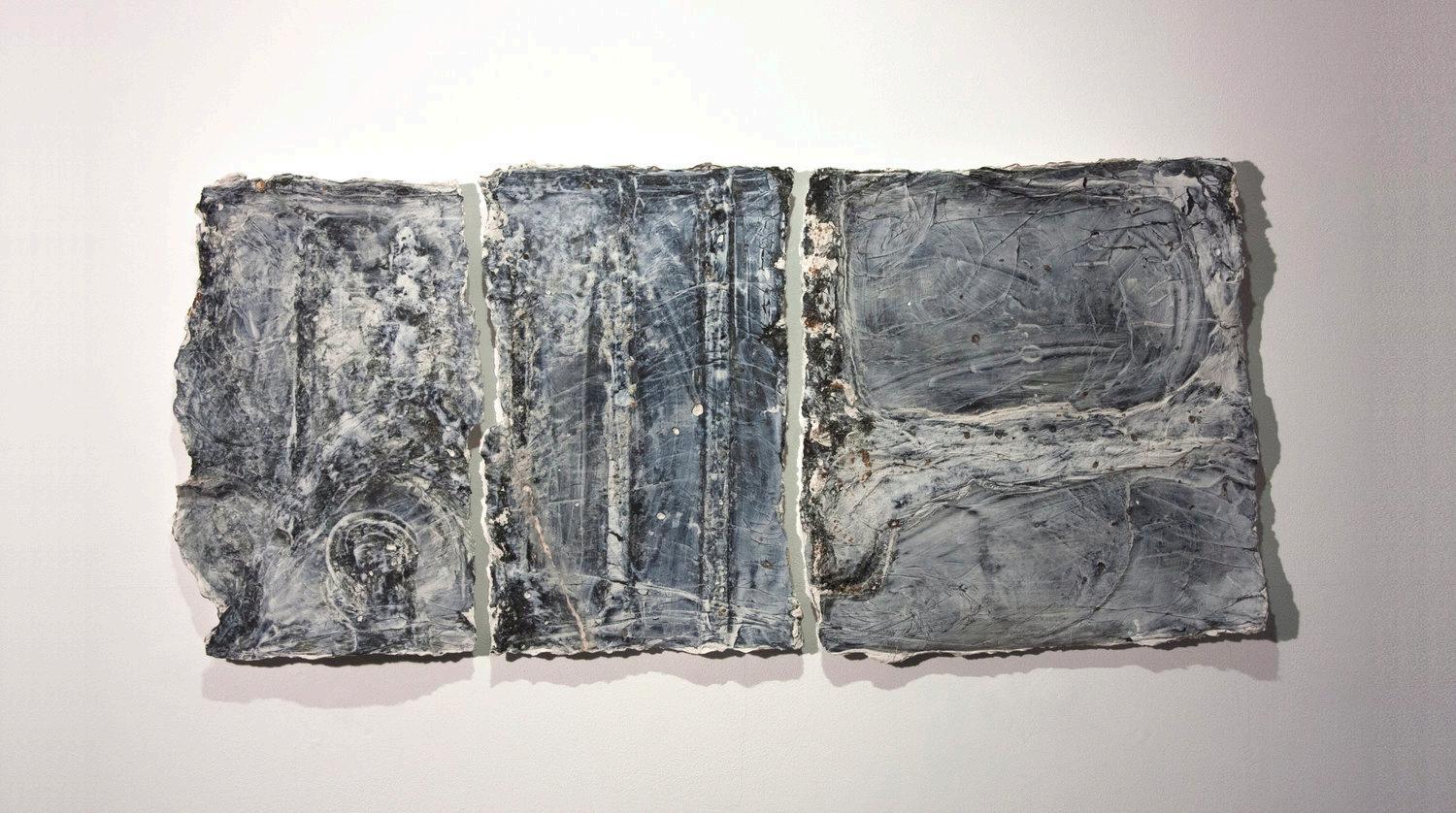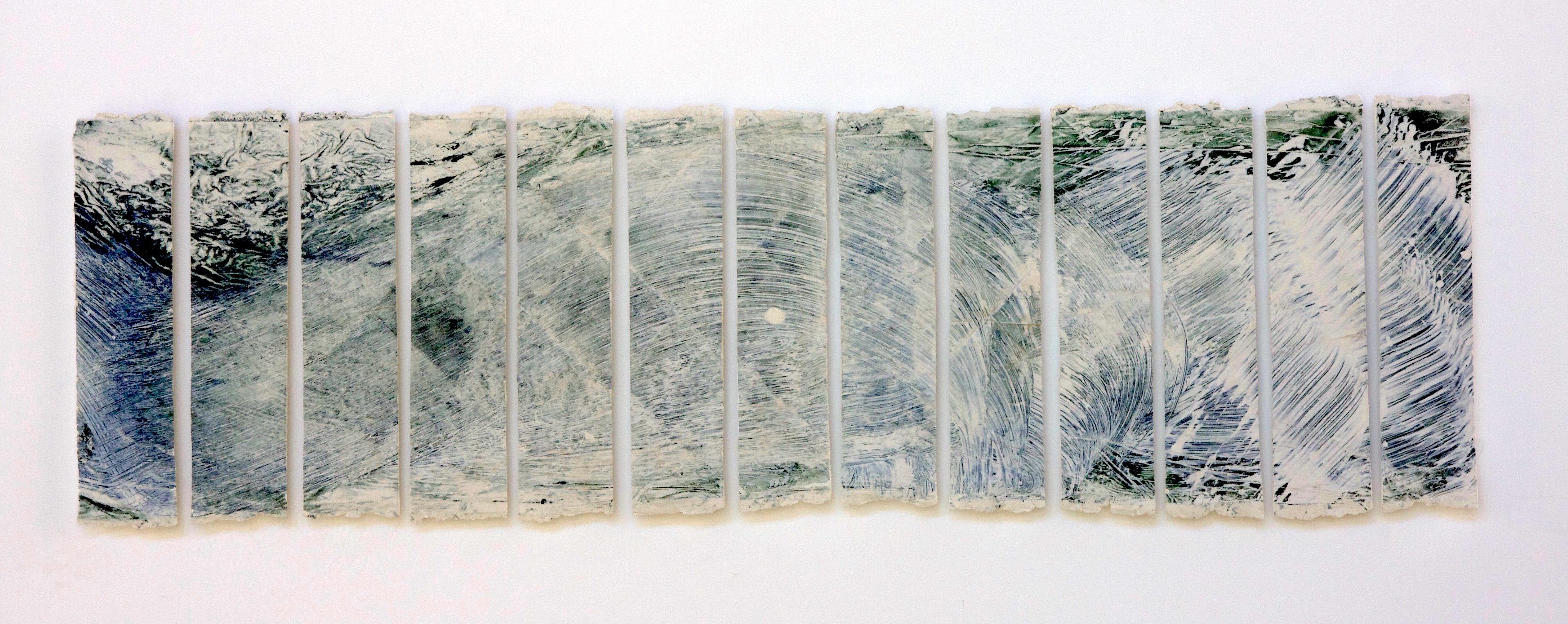
2 minute read
300-WORD STATEMENT
from GALPIN_01
by UWUoA322021
The research presented here demonstrates an innovative development and application of a ceramic printing technique, resulting in a range of ceramic works that utilise and develop a ‘haptic language’. This submission’s originality lies in the application of this as an analytical research process, a way to investigate and perceive what I call ‘ceramic sensibility’ as a spatial practice.
The research is based on the idea that the haptic is a form of perception that, via ceramics, offers a tangential way to access and present a different mode of spatial knowledge. I was invited to speak at the International Ceramics Festival symposium (Aberystwyth University, 2017) to discuss the potential for clay as a research tool in the exploration of a space.
Advertisement
The research objectives assess the potential for a critical language, pertaining to touch, to function outside the field of ceramics. In 2018, I exhibited in two exhibitions at the International Print Exhibition & Conference in Santander, Spain, where I was invited to show in the ‘Other Disciplines’ category to highlight these ideas in relation to print.
My membership of Space Place Practice allowed me to further evolve these ideas. Space Place Practice provides a platform for developing multi-disciplinary research into ceramics, the haptic, and involvement in contemporary fine-art discourse and theoretical enquiry. I exhibited with them nationally and was subsequently selected to exhibit at ‘Loss & Lucidity’, Lisbon, Portugal, 2019. Building on Bonnie Kemkse’s PhD, Evoking Intimacy: Touch and the Thoughtful Body in Sculptural Ceramics, my research evolved into the application of a haptic sensibility to a range of contexts utilising a process of exploration, experimentation and reiterative questioning.
Other works instrumental to the research include Paul Rodaway’s model of a haptic system, while the phenomenological approach re: the experience of space is informed by Gaston Bachelard’s work.
One of the fundamental qualities of clay is its capacity to take an impression, a print. You can still see the footprints on floors of caves in Southern France left by Prehistoric man and finger marks of the makers on early Egyptian pottery. It is this intimacy between the artist and viewer that I find intriguing about ceramics.
Employing these tactile qualities, my research is a haptic exploration of a space. By placing my material between myself and the world around me and in this piece above rubbing thin layers of porcelain slip and/or stains over a surface, the process records both a space and a narrative of activities that have left their mark. Made of actions such as sweeping the floor or greeting a friend, the pieces have a narrative content, a haptic story about how human actions exist. The emphasis is not on the story telling but on creating a text; a font of haptic forms.



